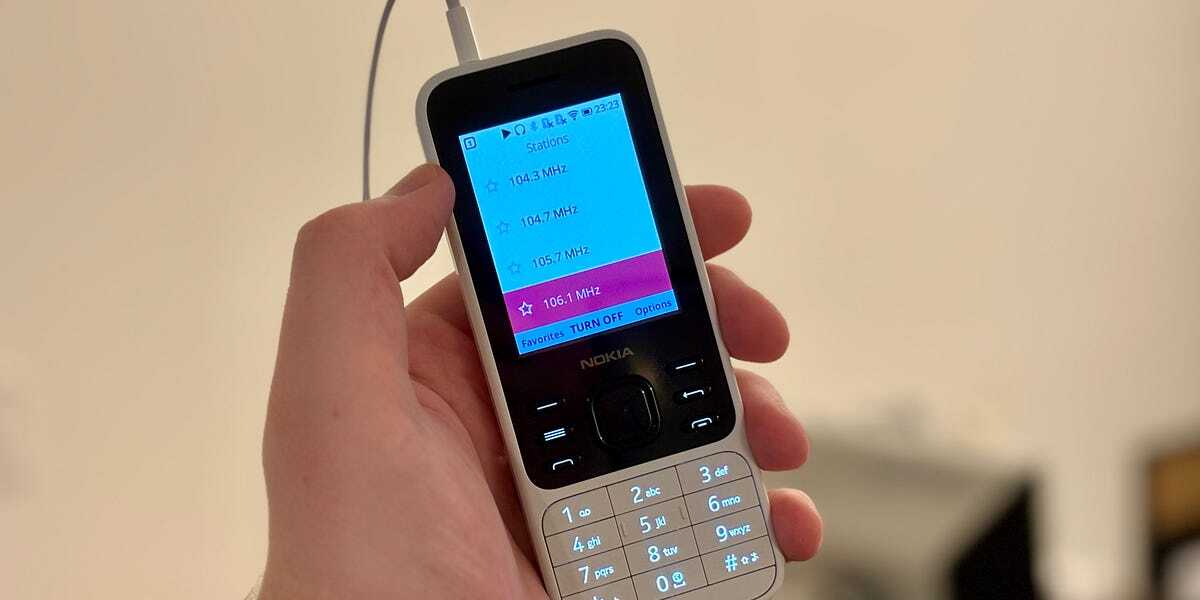- cross-posted to:
- technology@lemmy.world
- cross-posted to:
- technology@lemmy.world
I didn’t even realize Qualcomm removed the built in FM radio from their chips. Huh.
I’d say AM radio is a better safety feature for Australians at least, since the ABC broadcast emergency warnings via their AM stations.
i hate how every quality of life feature now has to be pitched as essential safety, instead of simply being there because it’s good. can’t have quality anymore unless it’s literally necessary
Germany barely has FM anymore - it’s due to be shut off in the next few years.
I keep a small solar/crank generator/USB-powered radio in my car. Which can provide USB power, act as a light, and also, in a pinch, charge my cellphone. You can get these starting at about $13 on Amazon.
That’s not quite as good as having one with everyone, but as long as you’re within walking distance of your car, you can probably get to it. It also has some benefits:
-
More power-friendly than a cell phone.
-
At least a portion of the kinds of things that might take out the cell infrastructure (e.g. cyberwarfare targeting the cell system) may also take out phones themselves, like if someone can push bad updates out to the phones. Your dead-simple FM radio isn’t going to have problems unless actual FM radio broadcasters get knocked out. If you’re in the US, there is very little real opportunity for someone to conduct a significant, conventional attack on the country, but being able to find holes in the Internet-connected infrastructure and do damage there has a lot more unknowns and the ability of various parties to disable or destroy it is much more of a possibility. Militaries do build up collections of holes to hit adversaries with. One of the first things Russia did when invading Ukraine was to knock out Viasat infrastructure, using a hole that they’d discovered in that company’s network, to degrade communications in Ukraine by pushing out an update to brick satellite modems. I also remember some guy at a think tank in the US that covers cyberwarfare saying that one of the surprises was that Russia didn’t try to disable Ukraine’s cell network, either via cyberwarfare or via conventional means; taking out the cell network would do a lot to dick up a country.
-
Phones should have FM radio not as an emergency feature, but as a method of banging out the tunes. I wanna jam out at a campsite with no downloaded music and no cell service.
While not a physical radio, a Linux phone such as the Librem 5 in conjunction with an RTL-SDR dongle and external antenna may be a good candidate for a mobile software-defined radio (SDR) transceiver.
SDR frameworks such as GNUradio or REDHAWK are well-established by this point. Newer versions of REDHAWK are designed to run on CentOS/Rocky Linux, however, and they don’t (AFAIK) come with a mobile-friendly UI.
I do know that there are some web-based SDR tools in the wild. I’m not very familiar with them, their system requirements/capabilities/limitations, but they could be worth a look to jump-start a Progressive Web App for mobile devices.
Maybe the 3.5mm jack and headphones could double as an antenna!
Analogue radio is getting shut down in favor of digital broadcasts, so I doubt this would truly be helpful in many areas.
Aren’t digital radio less reliable than analog FM broadcasts? Would digital broadcasts be as useful during an emergency?
I don’t really know that much about the subject, so I’d like to learn a bit more.
It’s not necessarily clear cut for one being more reliable than the other. FM broadcasts are analog and more likely to be subject to interference (interference will directly impact what you hear, but not as badly as with AM radio) and as the signal falls off it will be harder to hear. Digital radio will be perfectly clear as long as you get a signal, but may become distorted or just cut out if the signal is weak and there are too many errors in the data being received. There will be error correction for digital radio signals, but eventually you won’t be able to receive reliably enough that it will fail. If I had to guess, assuming all of the equipment is working, digital is probably going to be more reliable than analog radio in more conditions and over a longer distance, and it probably needs less bandwidth in general because you could compress the stream.
I’d argue it is still less reliable since the channels are multiplexed. This means a failure of single transmitter takes down all of those channels at once. Secondly, digital radio often uses SFN to save bandwidth and power. This however means that a single misconfigured/malfunctioning transmitter can cause destructive interference in a wider area.
This is happening in my area for a few months now. A new low power DAB+ transmitter was added into the network. I was able to get a poor but still usable signal before, while now the signal is strong, there’s too much interference for the error correction to compensate. Someone on a forum from this area has mentioned the same happening to him after the addition of this transmitter, when trying to tune DAB+ in his car.
But sure, if the technology works, it can be better.
In a life or death situation it would be easier to construct an FM transmitter/receiver than a digital counterpart.
AM transmitters / receivers are far easier to construct than FM ones, though. If I was in an emergency situation where I couldn’t communicate with anybody I think I might be able to at least make an AM receiver, even if there aren’t very many components around… But I would need a reference to have any clue how to approach an FM one, and you’d definitely need more components available. Frequency modulation is quite a bit more complicated. If you want to transmit, CW is probably your best hope?
Realistically, though, almost anybody in an emergency situation is doomed if the only thing that would save them is building any kind of radio. It’s not a skill set that most people have… Which I guess is why you might advocate for everybody’s phones to be able to act as FM receivers in case that’s the best way to get an emergency broadcast, because then they would have a device that’s capable of it on hand. You’re probably better off if you have a dedicated emergency radio, especially if you might lose power for an extended period of time, though.
my phone has an fm radio but it needs wired headphones
That’s because the FM signal needs an antenna that’s longer than you can fit in your phone
Good luck bringing it back when the whole industry moves away from wired headphones and 3.5mm jacks.
industry moves away
And nobody asked them to.
I like 1/8" jacks too, but active noise cancellation – which is pretty impressive, honestly – legitimately needed a source of power, and there was no standard way of providing that over that interface.
You can get both USB-C or Bluetooth adapters for a 1/8" headphone set to run an existing pair. I’ll concede that it’s a bit more bulk to carry, but one can continue to use 1/8" headphones with phones.
Wired active noise cancelation headphones exist, you know. They have batteries, which are a perfectly legitimate source of power.








